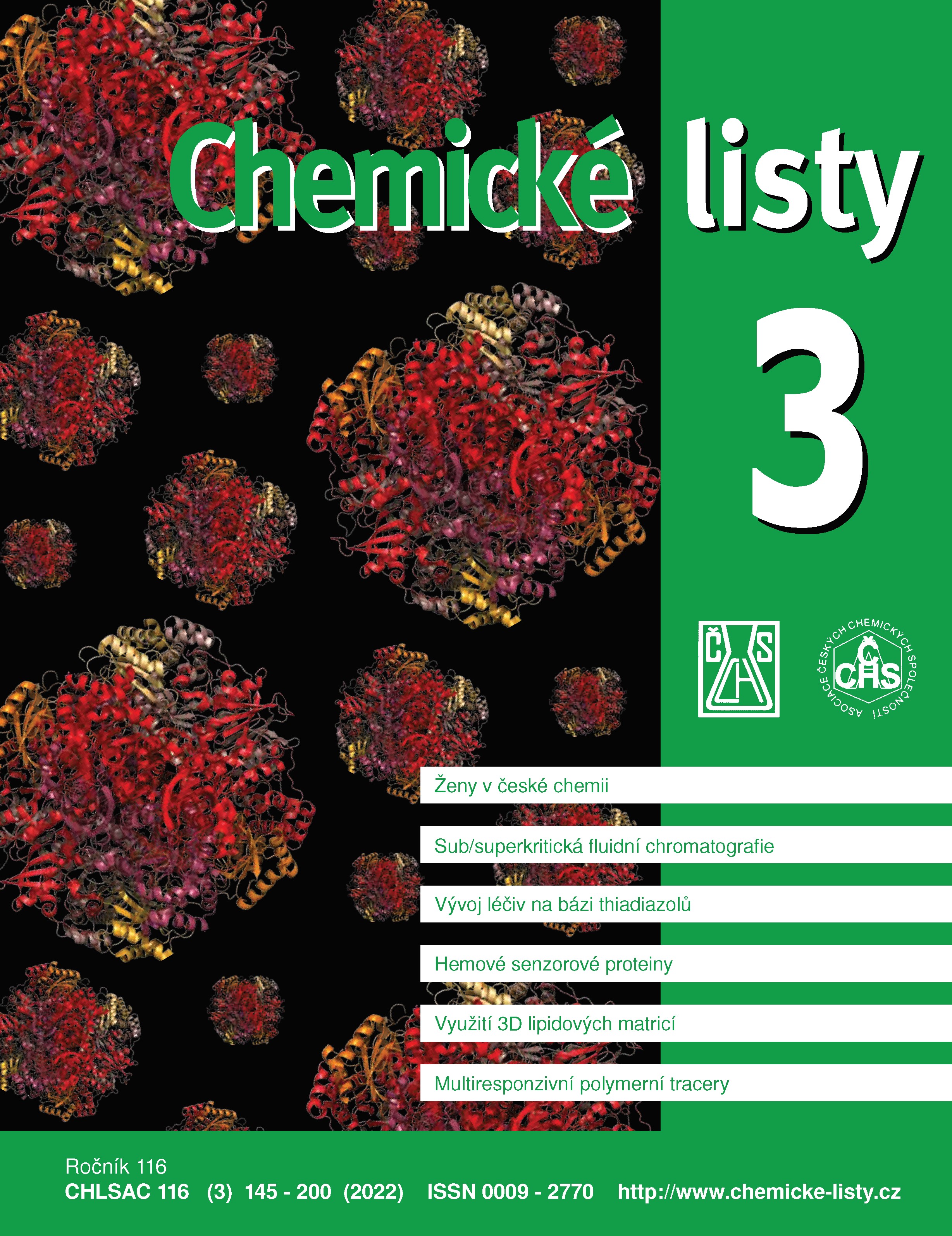Sub/superkritická fluidní chromatografie pro analýzu chirálních sloučenin
Tento článek je součástí seriálu Ženy v české chemii
DOI:
https://doi.org/10.54779/chl20220146Klíčová slova:
sub/superkritická fluidní chromatografie, enantiomer, chirální stacionární fáze, enantioselektivita, separaceAbstrakt
Chirality is an essential feature of nature as it is common for many biologically active compounds. The different biological effects of individual enantiomers in a chiral environment are generally known. Therefore, there is a need for fast, efficient, and robust methods for their separation, quantification, and purification, too. The easiest way is to use chromatographic methods utilizing chiral stationary phases. Sub/supercritical fluid chromatography has become popular in the field of enantioselective separations in various scopes and, in some cases, has become a method of the first choice.
Therefore, this review article covers actual trends and possibilities of sub/supercritical fluid chromatography in enantioseparations. Ways to influence enantioselectivity of the separation system by column coupling, screening approaches, and processes of methodical development for fast and efficient analyses are discussed.
Sub/supercritical fluid chromatography under suitable experimental conditions provides fast and highly efficient separation of chiral compounds.





